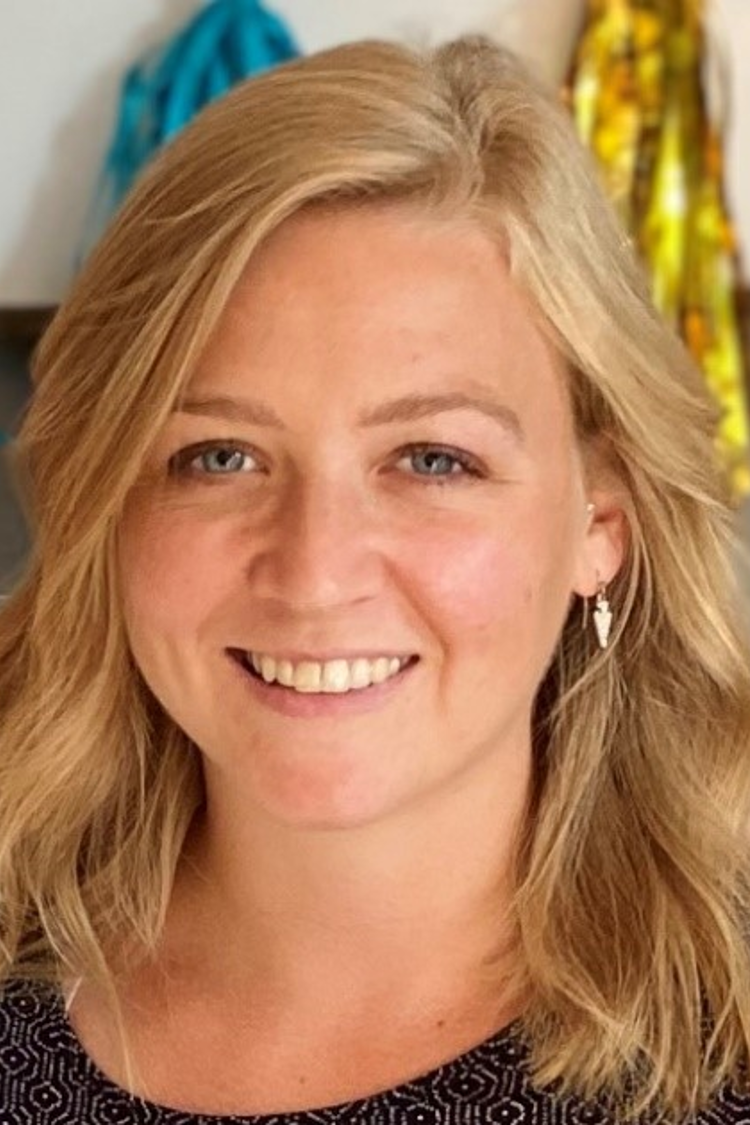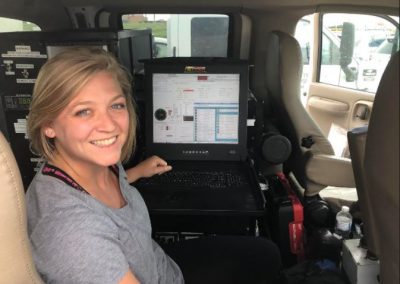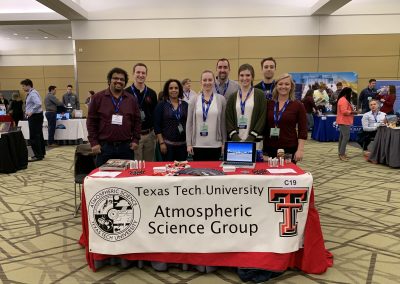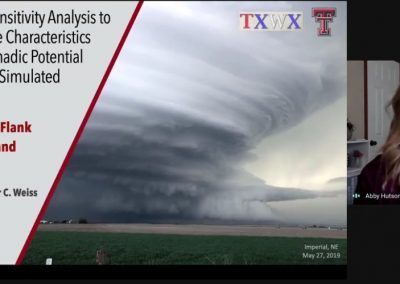Abby Hutson
Assistant Research Scientist
4840 S. State Rd.
Ann Arbor, MI 48108-9719
Photo Gallery
Abby operated the Texas Tech Mobile Ka-band Radar in the field every spring scanning tornadic supercells throughout the Great Plains.
Texas Tech Atmospheric Science faculty and students participated in the annual American Meteorological Society career fair (2020).
Researcher Profile:
Abby Hutson, PhD, joins CIGLR as an Assistant Research Scientist after two years as a CIGLR Postdoctoral Research Fellow collaborating with Ayumi Fujisaki-Manome, PhD, and the climate modeling team at NOAA GLERL to improve the simulation of precipitation within the Great Lakes region and advance our understanding of its potential impact in a changing climate.
“I am thrilled to continue working with the strong group of interdisciplinary researchers at CIGLR!” said Hutson. “As an atmospheric scientist, it is rare to be able to work so closely with hydrologists, lake modelers, ecologists, and social scientists. I am excited to contribute to CIGLR’s goal of conducting comprehensive research within the the Great Lakes through atmospheric modeling, and look forward to strengthening the meteorology research community within the region.”
Prior to working with CIGLR, Hutson studied storm-scale dynamics within supercell thunderstorms, using both observations and numerical modeling to identify outflow characteristics associated with tornado formation.
“I began my research journey studying small-scale storm dynamics in the Great Plains – a vastly different topic than what I am doing now,” said Hutson. “But, having grown up within the Great Lakes region, and learning about the pressing need for an increased understanding of how Great Lakes weather will evolve in our changing climate, I grew attached to the research!”
Hutson will be working on multiple aspects of weather and climate in the Great Lakes, including providing downscaled future climate model data tuned for the Great Lakes region, improving the understanding of how lake-effect snow is simulated in operational models, and analyzing trends in large-scale storm activity and how it may contribute to the Great Lakes hydroclimate.
“I am eager to model the Great Lakes weather and climate for projected future scenarios,” said Hutson. “The atmosphere plays a significant role in the lake dynamics (and vice versa), hydrology, and even biology of the Great Lakes. Although we may never know exactly how our environment will change in the future, it is our goal to understand the range of possibilities in which our climate will evolve. This, in turn, will allow us to prepare for the range of evolution we will see in important aspects of the Great Lakes system, like lake levels, ice cover, flooding, and harmful algal blooms.”
Education:
-
- Ph.D., Geosciences, Texas Tech University (2021)
- M.S., Atmospheric Science, Texas Tech University (2017)
- B.S., Meteorology and Mathematics, Valparaiso University (2015)
Research Interest/Area of Expertise:
-
- Climate Modeling
- Storm Dynamics, Tornadoes, Supercells, Thunderstorms, Precipitation
- Climate Change
Recent Publications:
Hutson, A., Weiss, C., & Bryan, G. 2019. Using the Translation Speed and Vertical Structure of Gust Fronts to Infer Buoyancy Deficits within Thunderstorm Oublow. Monthly Weather Review. 3575–3594.
Eveler, A., T. Grashel, A. Kenyon. 2015. Optimizing the Allocation of Vaccines in the Presence of Multiple Strains of the Influenza Virus. Rose-Hulman Undergraduate Mathematics Journal. 16. 121-142.
Recent Presentations:
2021 Hutson, A.: Using a Statistical Ensemble Technique to Determine Why Some Supercells Produce Tornadoes (and Why Others Do Not). University of Michigan CLaSP Seminar Series, Ann Arbor, MI.
2020 Hutson, A. and C. C. Weiss: Using Ensemble Sensitivity Analysis to Identify Storm-Scale Characteristics Associated With Tornadic Potential in High-Resolution Simulated Supercells. Severe Local Storms Symposium, Boston, MA., paper 951.
2020 Hutson, A. and C. C. Weiss: Using Ensemble Sensitivity Analysis to Identify Storm-Scale Characteristics Associated with Tornadic Potential in High-Resolution Simulated Supercells. 4th Texas Weather Conference, Lubbock, TX



